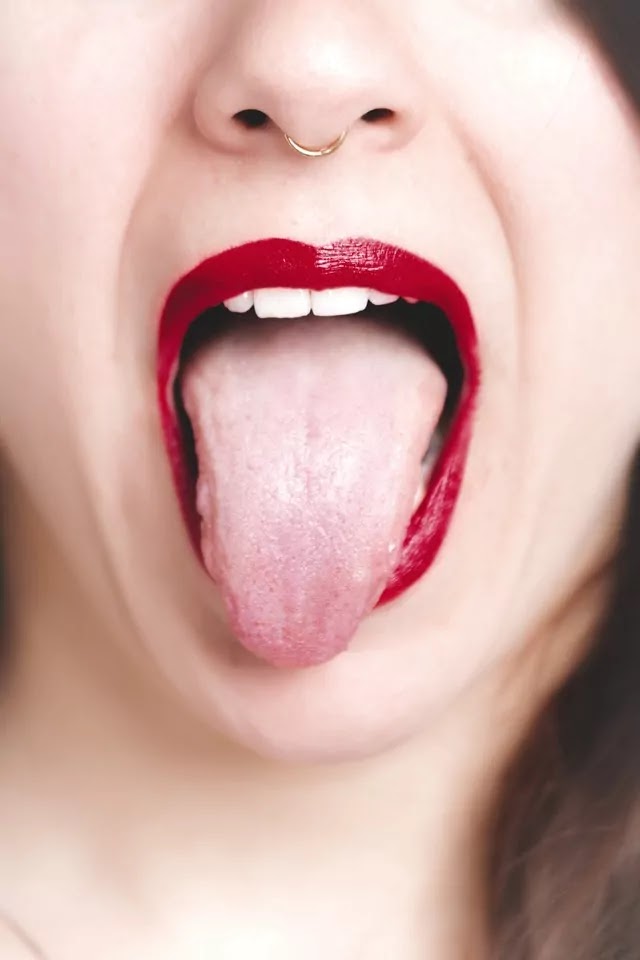Different types and conditions of the tongue play an important role in the differential diagnosis of various diseases. Among which observing the color of the tongue is also very much important.
A normal healthy tongue is moist and the color is pink, varies to slightly light or dark in shades. Different coloring conditions of the tongue indicates some diseases. Let’s have a look at it.
Table of Contents
White tongue:
It is usually seen in poor oral hygiene or dry mouth. It is a mostly harmless condition but some other diseases should also be evaluated such as…
- Lichen planus: Multiple white plaque-like areas seen. It also affects gums and skin.
- Leukoplakia: It mostly affects men over the age of 40. Persistent white patches on the mucous membrane of the tongue, gums, lips, and cheeks are present. It usually indicates a precancerous state. Therefore, other symptoms in the body should also be observed.
- Hairy leukoplakia: It is characterized by non-removable white lesions particularly affects the ventral aspect and lateral margin of the tongue. It mostly occurs in immunocompromised persons like in HIV disease.
- Thrush: It is an infection caused by Candida yeast in the mouth.
- Syphilis: White tongue with soreness can also be seen.
Pale tongue:
It is present in anemia. Ankylostoma or hookworm infection causes blotting paper like pallor with pigmented margins.
Magenta colored tongue:
Present in vitamin B2 or Riboflavin deficiency.
Red tongue:
A red raw ‘angry looking’ tongue is seen in diseases like pellagra which is a deficiency disease of vitamin B3 on niacin, severe or untreated diabetes, sprue, prolonged febrile illness.
Purple tongue:
It is seen in polycythemia in which red blood cells are increased in the body.
Blue tongue:
It is caused by central cyanosis, due to low levels of oxygen in many cardiac or respiratory diseases.
Bluish red or dark red tongue:
It is observed in vitamin B2 deficiency, polycythemia vera, overuse of broad-spectrum antibiotics.
Strawberry tongue:
Red tongue with raised papillae is strong suspiciousness of Scarlet fever. Other diseases like Kawasaki’s disease and toxic shock syndrome should also be differentiated.
Raspberry tongue:
Red fungiform papillae are scattered on the grey background of the tongue looking like a raspberry is seen in the early stage of Scarlet fever.
Slaty blue tongue:
Seen in hemochromatosis which is a condition of iron overload in the body.
Black tongue:
It is usually present in fungal infection, iron, opium, bismuth, or tobacco overuse.
Yellow tongue:
Seen in jaundice but it is very rare. Also caused by irritants like hydrochloric or nitric acid.
Black hairy tongue:
Yellowish-brown or black furry patches due to hypertrophied and dense papillae mostly present in excessive smoking or antibiotic ingestion.
Brownish fur with dry tongue:
Also called as parrot tongue, seen in chronic renal failure.
Excessively furred tongue:
It is seen in…
- Difference febrile illness especially typhoid fever.
- Trismus: It is the condition in which the opening of jaws is reduced and it can be caused by a carious tooth, mucous membrane fibrosis due to excessive use of tobacco, etc.
- Poor oral hygiene and dry mouth commonly due to mouth breathing.
If you have any changes in the color of the tongue, consult your doctor for more evaluation and help. In the next article, we will discuss What causes uncontrolled movements of the tongue? Thank you.

